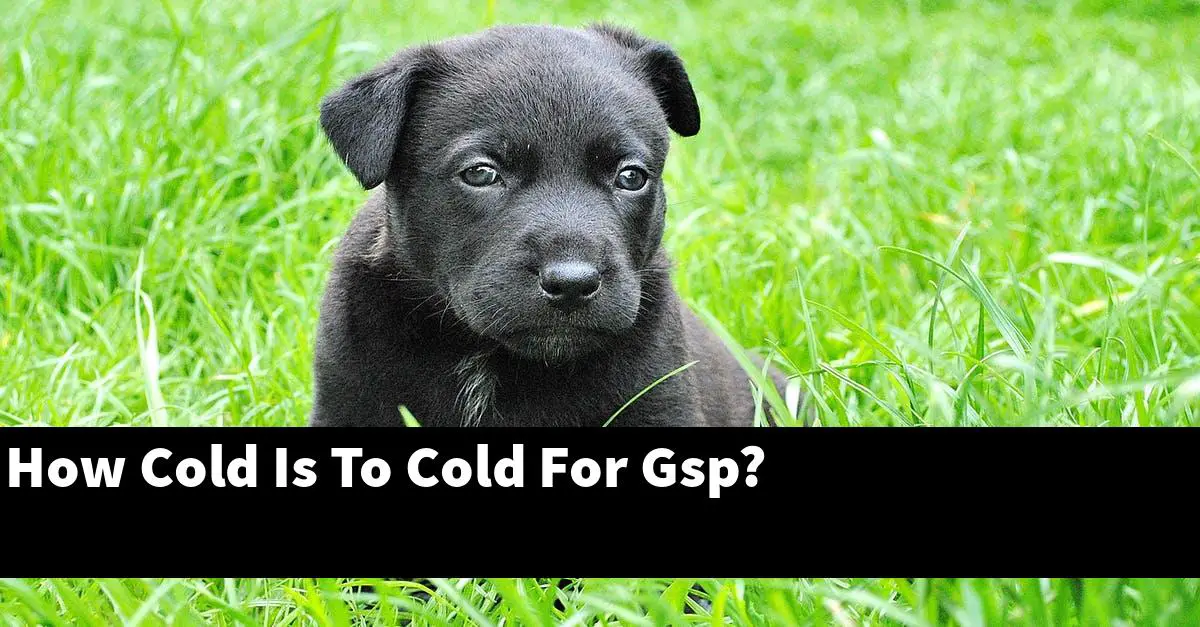The ideal temperature for GSP is between 68-77 degrees Fahrenheit according to the American Kennel Club, though some owners have noted that their dogs do well in colder climates.
The article is going to be discussing how cold is too cold for GSP to train in and what type of weather he prefers.
Table of Contents
How cold is too cold for GSP?
How cold is too cold for German Shorthaired Pointers?
GSPs are a versatile breed of dog, able to withstand a wide range of temperatures. However, like all dogs, they are susceptible to cold weather injuries and illnesses. It is important to know how cold is too cold for your GSP, and take precautions to keep them safe and healthy in colder weather.
German Shorthaired Pointers are bred to be versatile hunting dogs, able to withstand a wide range of temperatures. However, like all dogs, they are susceptible to cold weather injuries and illnesses. It is important to know how cold is too cold for your GSP, and take precautions to keep them safe and healthy in colder weather.
GSPs are a hardy breed, but they are not immune to the dangers of cold weather. Hypothermia and frostbite are serious risks for all dogs in cold weather, and GSPs are no exception. Symptoms of hypothermia in dogs include shivering, lethargy, weakness, and difficulty breathing. Frostbite can cause pain, swelling, and discoloration of the skin. If you suspect your GSP is suffering from hypothermia or frostbite, seek veterinary care immediately.
There are several things you can do to protect your GSP from the cold weather. First, make sure they have a warm, dry place to sleep inside. A dog house is not sufficient in cold weather – your GSP needs to sleep indoors. Second, provide them with a warm coat or sweater to wear when they go outside. Third, be aware of the signs of hypothermia and frostbite, and seek veterinary care immediately if you suspect your GSP is suffering from either condition.
By taking these simple precautions, you can help ensure your GSP enjoys a healthy and happy life, even in cold weather.
Does GSP like cold weather?
According to scientific research, GSPs do not prefer cold weather, but their behavior can change to accommodate their environment. In a study published in the journal Behavioral Ecology, GSPs were found to spend more time in the sun when the temperature was colder. The researchers believe that this is because the GSPs are trying to regulate their body temperature.
While GSPs may not enjoy cold weather, they are able to adapt their behavior to accommodate it. This is just one of the many things that make GSPs such amazing animals.
How does GSP react to cold weather?
When the weather outside is cold, your body automatically tries to warm itself up. This is done by constricting the blood vessels in your skin to minimize heat loss. The process of constricting the blood vessels is known as vasoconstriction.
One of the side effects of vasoconstriction is that it can cause your blood pressure to rise. This is because the constricted blood vessels cause the heart to work harder to pump blood through the body.
People with GSP are more susceptible to the effects of cold weather because their bodies are not able to vasoconstrict as efficiently as people without GSP. This means that they are more likely to experience a drop in blood pressure when it is cold outside.
If you have GSP and are going to be in cold weather, it is important to dress warmly and to be aware of the signs of hypothermia. Hypothermia is a condition that occurs when your body temperature drops below 95 degrees Fahrenheit.
Symptoms of hypothermia include shivering, confusion, slurred speech, and drowsiness. If you experience any of these symptoms, it is important to seek medical attention immediately.
What is the ideal temperature for GSP?
The ideal temperature for GSP (Giant Short-Clawed Otters) is around 21 to 26 degrees Celsius. They are a tropical species of otter, so they cannot tolerate cold weather for long periods of time. If the temperature drops below 21 degrees Celsius, they will start to experience health problems.
Do German Shorthaired Pointers need winter coats?
Yes, German Shorthaired Pointers need winter coats because they are a shorthaired breed. Their coat is not as thick as a longer haired breed, so they are more susceptible to the cold. A winter coat will help protect them from the elements and keep them warm.
Can you keep GSP outside?
Yes, you can keep GSP outside, but it is not recommended. GSPs are bred as hunting dogs and have a strong prey drive. This means that they may chase and even kill small animals, including cats and chickens. In addition, GSPs are high energy dogs that need a lot of exercise. Without a yard or regular walks, they may become destructive.
How cold is too cold for a dog to be outside?
How cold is too cold for a dog to be outside?
The answer to this question depends on several factors, including the dog’s coat type, body fat percentage, activity level, and acclimation to cold weather.
Generally speaking, most dogs can tolerate cold weather quite well and don’t need to be brought indoors simply because of the temperature. However, there are some exceptions. For example, short-haired dogs with little body fat are more susceptible to cold weather and may need to be brought inside or given a sweater to wear when it’s cold outside. Additionally, very active dogs may also require extra protection in cold weather, as they may not have the opportunity to build up enough body heat while they’re playing.
Ultimately, it’s up to the owner to use their best judgment to determine whether their dog needs to come inside or not. If the dog is shivering, seems uncomfortable, or is otherwise showing signs of distress, it’s probably best to bring them inside.
Summary
– The answer to this question depends on several factors, but most dogs can tolerate cold weather quite well. However, there are some exceptions, such as short-haired dogs with little body fat or very active dogs. If the dog is shivering, seems uncomfortable, or is otherwise showing signs of distress, it’s probably best to bring them inside.


